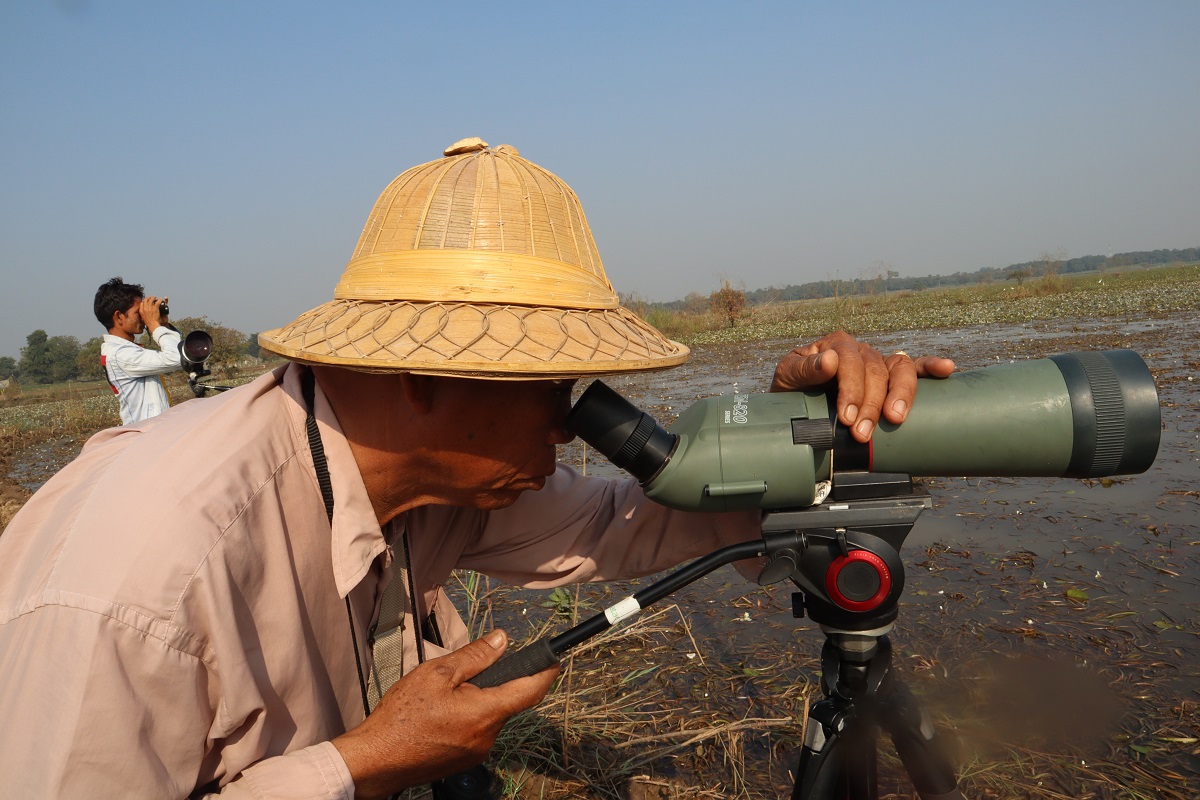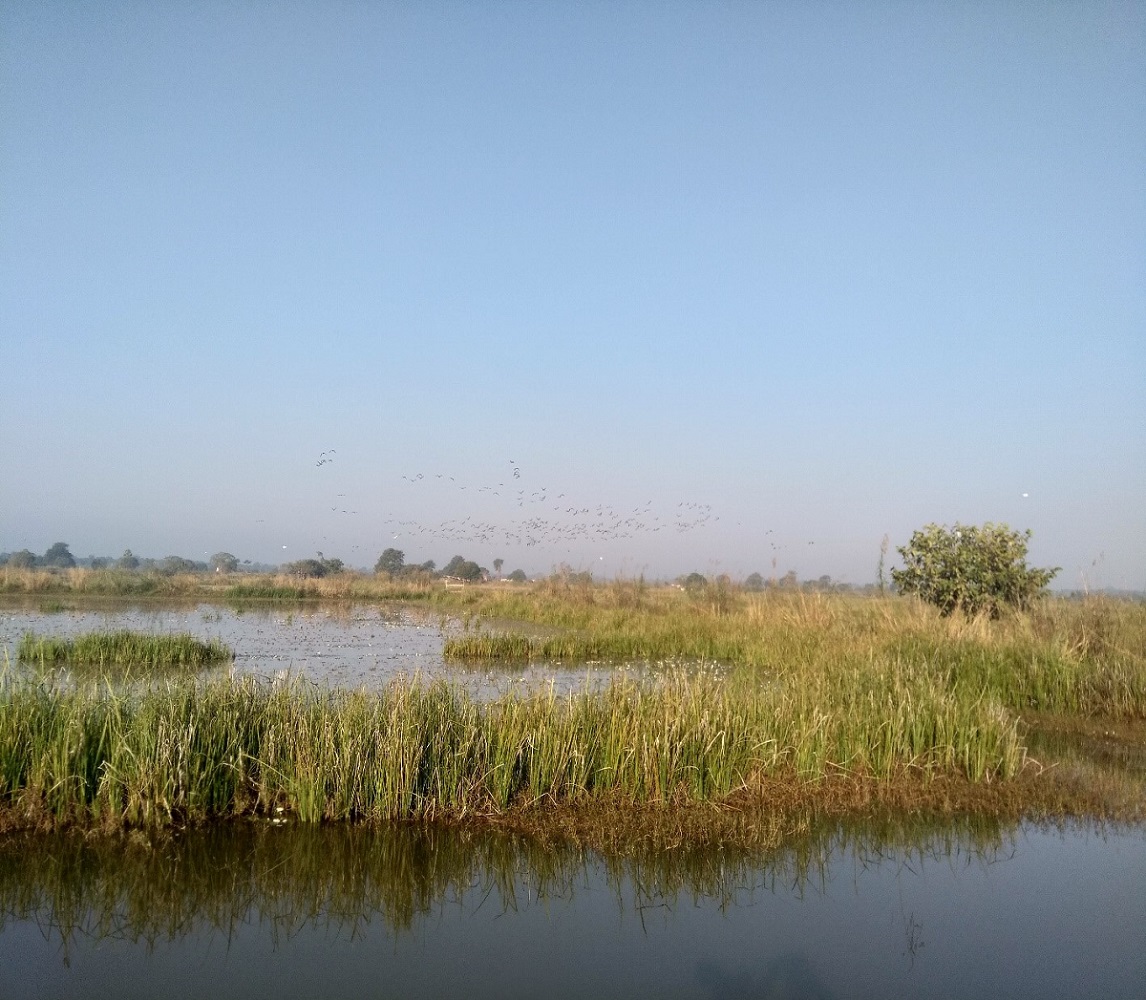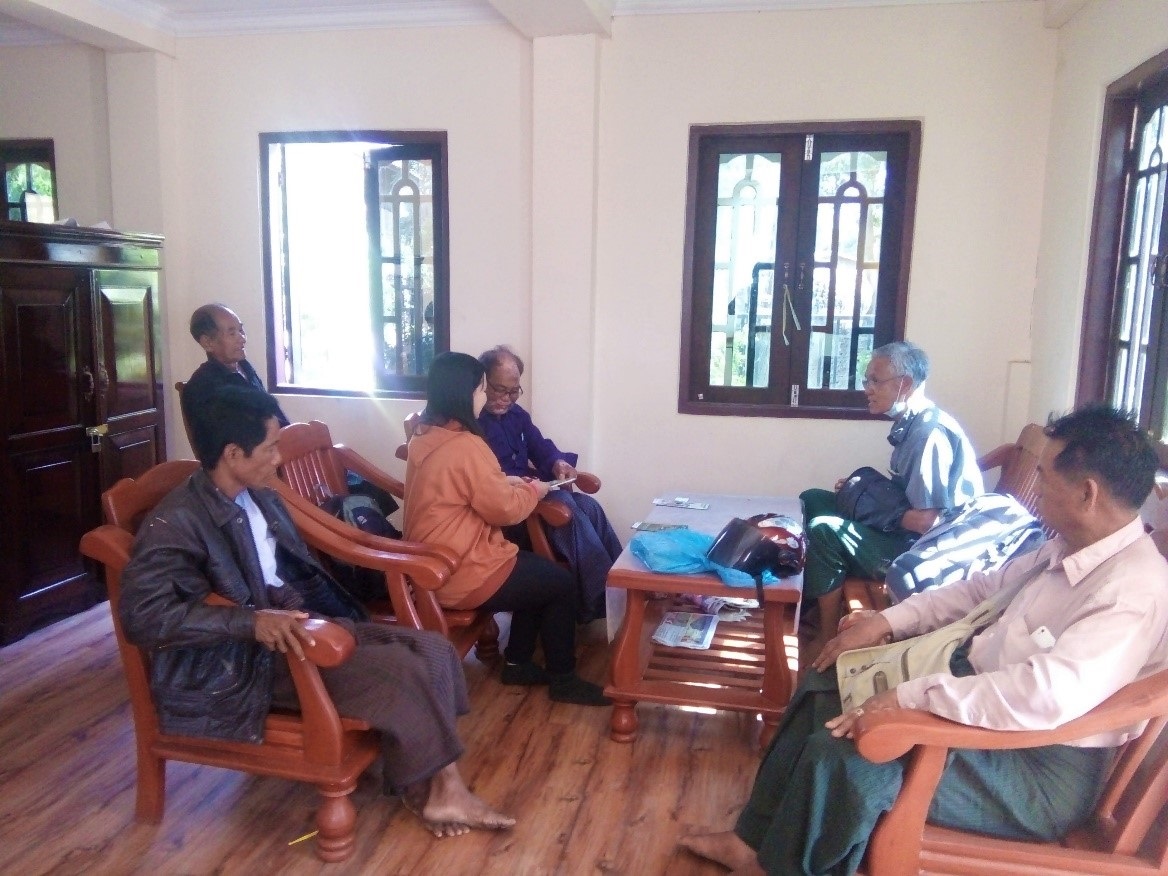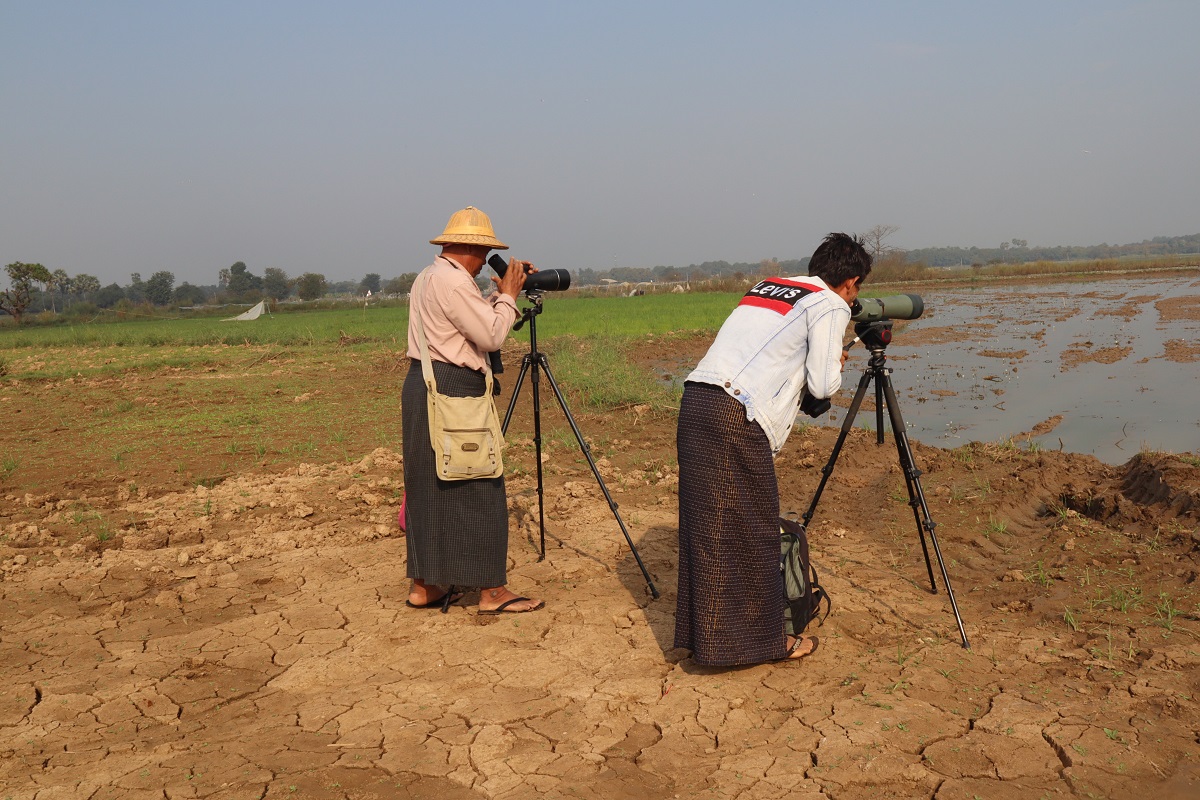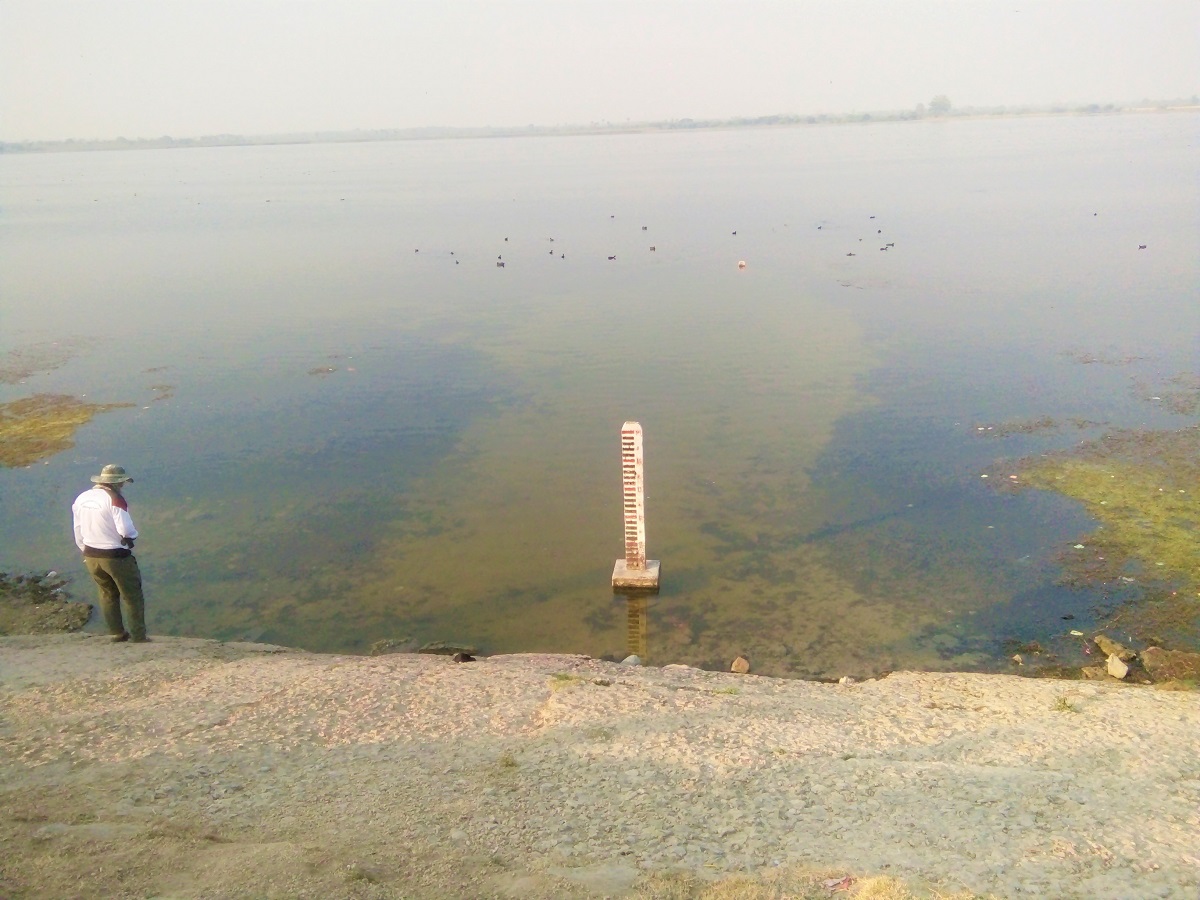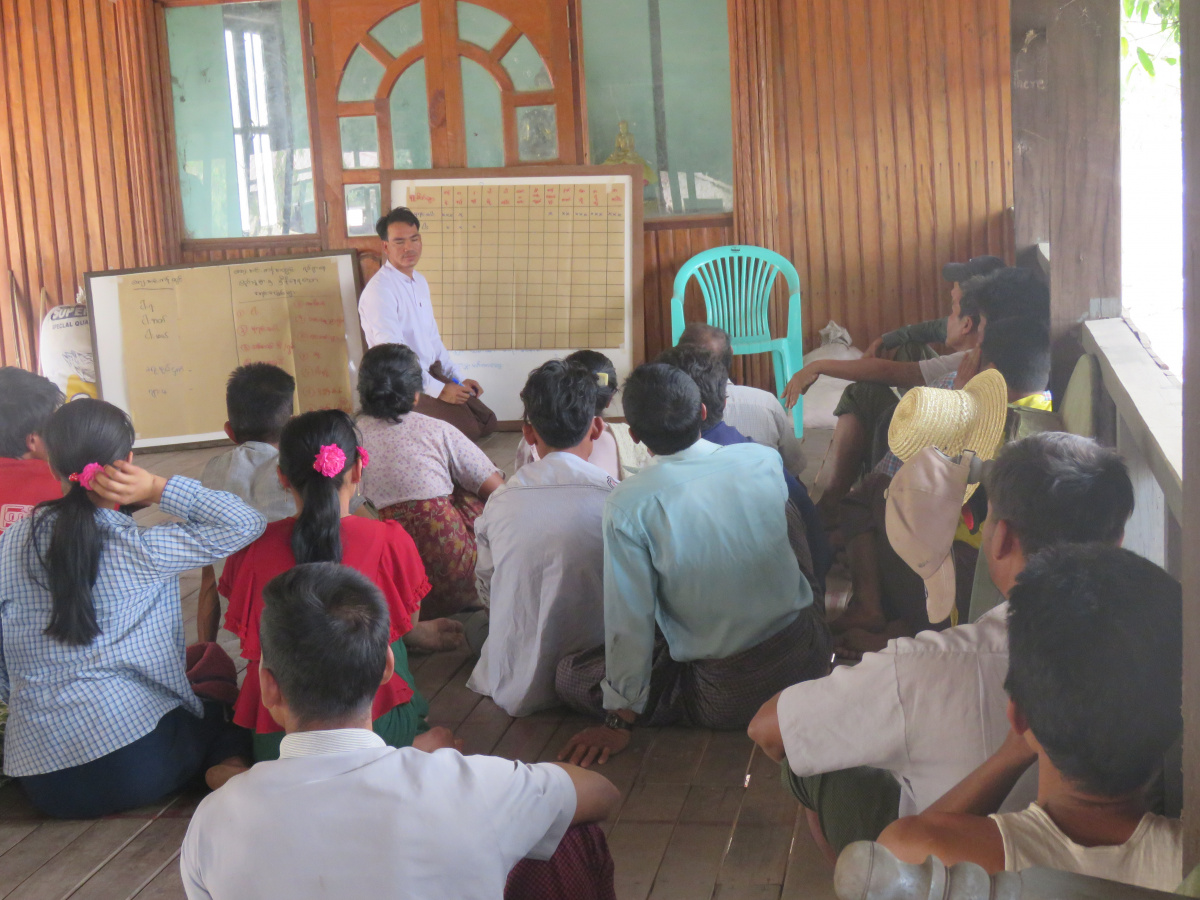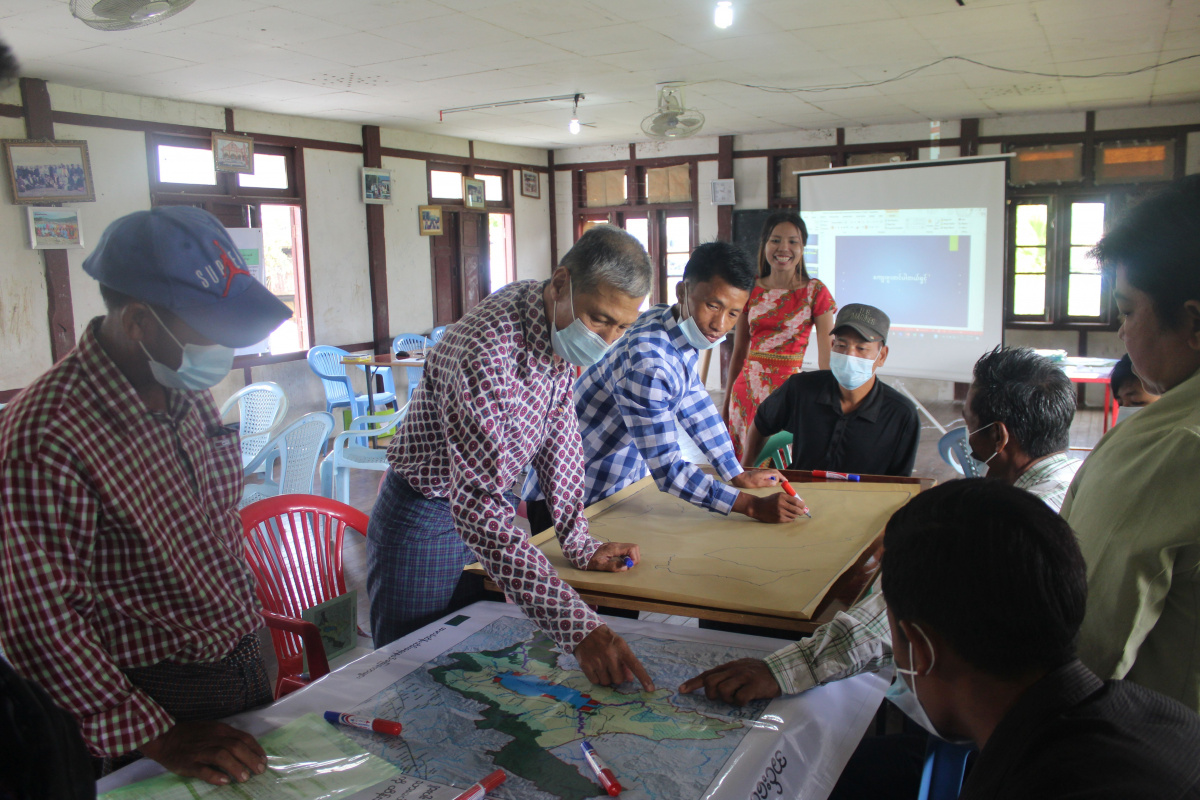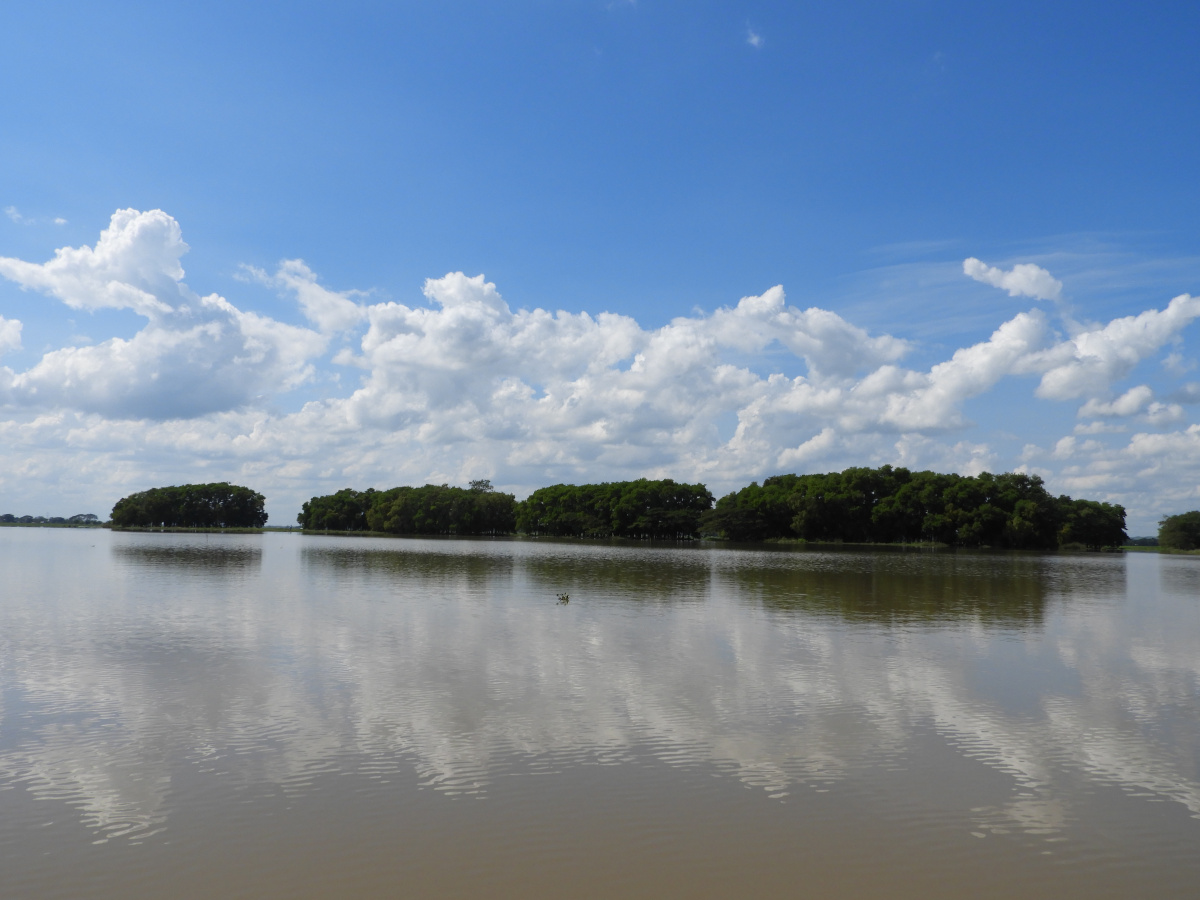Climate change threatens central Myanmar’s two most important freshwater wetlands and critically endangered waterbirds
Recent research conducted by the Biodiversity And Nature Conservation Association (BANCA) has demonstrated that Pyu Lake and Paleik Inn are the two most important freshwater wetlands in central Myanmar. The wetlands provide habitat for a variety of migratory waterbirds, including the critically endangered Baer’s Pochard. They also support local livelihoods and provide areas for recreational activities such as fishing and bird watching. As climate impacts exacerbate changes in precipitation and temperature, these ecosystem benefits are increasingly under threat.
Supported by a grant from IUCN’s Mekong WET project, BANCA conducted Vulnerability Assessments (VAs) on the impact of climate change at Paleik and Pyu Lakes in central Myanmar. The VA results highlighted a number of threats to the wetlands, including increased risks of floods and droughts as a result of climate change, invasive species, loss of habitat due to land conversion for agricultural purposes, illegal hunting and unsustainable fishing methods, and pollution resulting from agricultural run-off and poor sanitation.
The assessment was based on historical records coupled with participatory appraisals and dialogues with local communities and authorities. Wildfowl & Wetlands Trust (WWT) provided technical support to the process, which also relied on inputs from the Mandalay Regional Wetlands Conservation Committee, Shwe Kanthayar Nature Conservation Association, and Paleik Bird Lover Association.
Pyu Lake and Paleik Inn are located in a semi-urban area adjacent to local villages, and support irrigation, agriculture, and fishing. The wetlands are important habitats for both migratory and resident waterbirds. They also provide local communities with food, water, and protection from extreme weather, such as droughts and floods. Central Myanmar is a dry area, and wetlands in the region are susceptible to drying, especially when water is drained for agriculture and other uses. This threat is expected to be further exacerbated by climate change impacts, which have led to recent decreases in rainfall, reducing the number of waterbirds that visit the lakes.
Previous surveys conducted by BANCA and BirdLife demonstrated that Pyu Lake provides important habitat for at least 12 Baer’s Pochards and over 5,000 other waterbirds. With a current global population of fewer than 1,000 individuals, the Baer’s Pochard is listed as critically endangered on the IUCN Red List. Simba Chan, the Special Researcher at the Japan Bird Research Association and Wild Bird Society of Japan, added that “Birds wintering in the central dry zone may move around the lake complex, so the best solution is for this area to be managed and protected as one system.”
Last year, BANCA submitted a proposal to the Nature and Wildlife Conservation Division of the Ministry of Natural Resources and Environmental Conservation to designate the area as a Ramsar Site. The group has also recently prepared a proposal to the East Asian Australasian Flyway Partnership (EAAFP) to nominate the site as a Flyway Network Site. Advocates hope that these designations will lead to increased attention and further conservation of the site, drawing bird watchers from Myanmar and throughout the world. This will support the development of ecotourism in the area, strengthening local conservation groups and diversifying livelihood opportunities for local people.
The Mekong WET Small Grants fund several wetlands projects in the Indo-Burma region. These initiatives are directly answering specific climate threats to wetland ecosystems, species, and communities using Ecosystem-based Adaptation strategies as the main approach.
About MWET
Funded by the International Climate Initiative (IKI) of the German Federal Ministry for the Environment, Nature Conservation, Building and Nuclear Safety (BMUB), the “Mekong WET: Building Resilience of Wetlands in the Lower Mekong Region” project aims to build climate resilience by harnessing the benefits of wetlands in Cambodia, Lao PDR, Thailand, and Viet Nam.
Mekong WET will help the four countries to address their commitments to the Ramsar Convention, an international treaty for the conservation and sustainable use of wetlands, and to achieve the Aichi Biodiversity Targets.
About IBRRI
The Indo-Burma Ramsar Regional Initiative (IBRRI) was jointly developed by the Ramsar National Focal Points of the five countries (Cambodia, Lao PDR, Myanmar, Thailand, and Viet Nam), and IUCN’s Asia Regional Office, based on specific needs identified in these countries. It was endorsed by the 52nd meeting of the Ramsar Convention Standing Committee in June 2016. The IBRRI aims to support the coordinated implementation of the objectives of the Strategic Plan of the Ramsar Convention. IUCN acts as the Secretariat for the Initiative under the leadership of the Steering Committee, which includes representatives from the five governments and the Ramsar Convention Secretariat as an observer.
